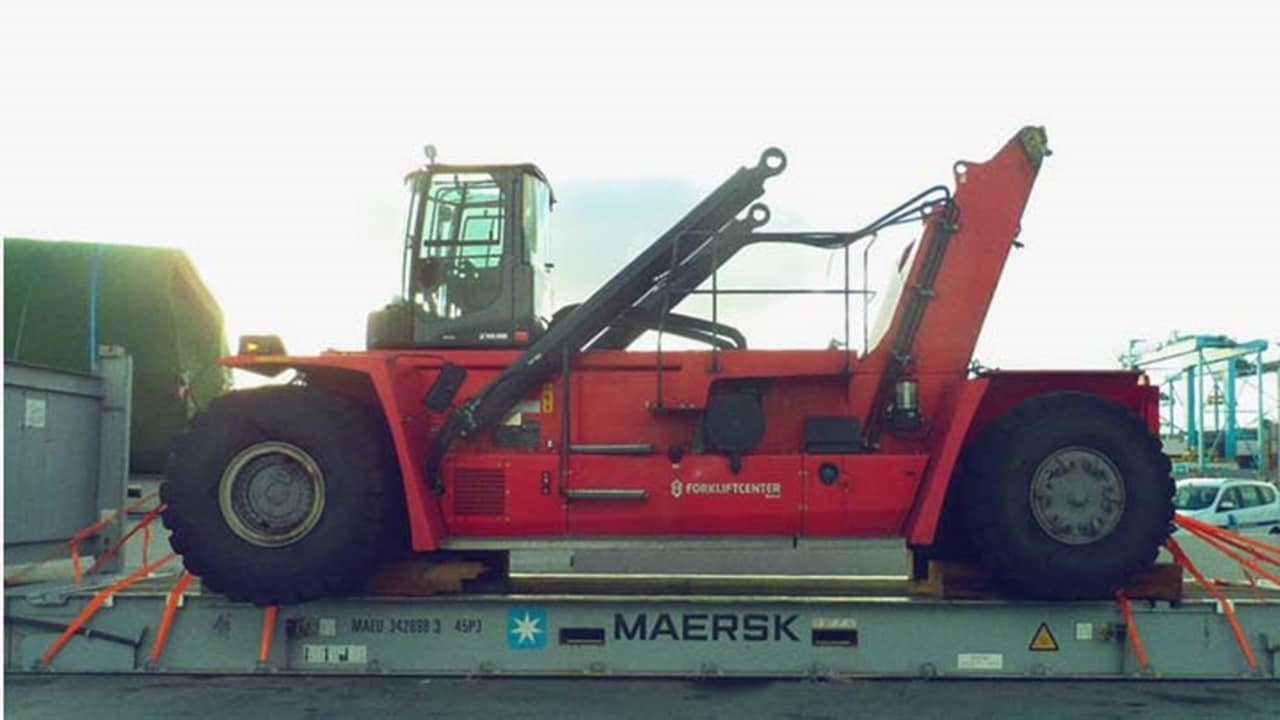
Out of Gauge cargo
A quick guide to best practices for out of gauge shipments.
What are Out of Gauge shipments
Not all cargo comes in standard and predictable sizes. At Maersk, we see special cargo like a 118-tonne propellor or an 18-tonne digger and know exactly how to fit them safely and securely for transportation in our containers. However, at times special cargo is misdeclared and can exceed our standard flat rack and open-top containers by length, width, height, or a combination of dimensions. This results in an out of gauge (OOG) scenario.

Importance of the OOG declaration process
The objective of out of gauge declarations is, first and foremost, to ensure the safety of the crew handling the cargo. It is also practised to minimise operational challenges due to dimension mismatches, which can result in delays. Let’s take a closer look:
Defining Out of Gauge cargo
Any discrepancies in your special cargo declaration result in it being considered an out of gauge shipment. Therefore, it is crucial to make sure the dimensions and particulars of your cargo are declared accurately. It’s also important to ensure your cargo is packed correctly so that it stays within the stipulated dimensions of your shipping container.
Here are a few reasons why cargo could be considered as misdeclared:
1. In-gauge bookings exceed the below dimensions
In gauge dimensions on special containers
| Equipment type | Length (CM) | Width (CM) | Height (CM) | Maximum payload (KG) |
|---|---|---|---|---|
|
Equipment type
20'OT
|
Length (CM)
549
|
Width (CM)
222
|
Height (CM)
234
|
Maximum payload (KG)
28,200
|
|
Equipment type
40'OT
|
Length (CM)
1,181
|
Width (CM)
219
|
Height (CM)
234
|
Maximum payload (KG)
28,600
|
|
Equipment type
40'OT HC
|
Length (CM)
1,181
|
Width (CM)
219
|
Height (CM)
265
|
Maximum payload (KG)
28,600
|
|
Equipment type
40'FR
|
Length (CM)
1,163
|
Width (CM)
244
|
Height (CM)
194
|
Maximum payload (KG)
34,500
|
|
Equipment type
40'FR HC
|
Length (CM)
1,163
|
Width (CM)
244
|
Height (CM)
226
|
Maximum payload (KG)
34,500
|
2. End wall position deviation: End wall position in a flat rack container is down despite being declared up
3. Weight deviation: Weight of cargo is higher than declared weight
4. Lashing equipment protrusions: Lashing equipment protruding outside the container should be taken into consideration when declaring dimensions
5. Cargo shifting: Changes to dimension due to poor lashing during transit. Your goods need to be secured correctly, considering vessel movements during ocean transport
6. Extra materials: Crates, lashing materials and dunnage used while lashing the container can change the total cargo dimensions
Cost implications incurred on misdeclared cargo
If cargo tendered at the terminal does not match the quoted description\dimension, the carrier reserves the right to cancel the booking. If the carrier nevertheless accepts the cargo, they reserves the right to charge additional freight, handling charges and Misdeclaration Fee (MID) (USD 500) incurred as a result of the cargo’s non-conformance with the quoted description\dimension.
